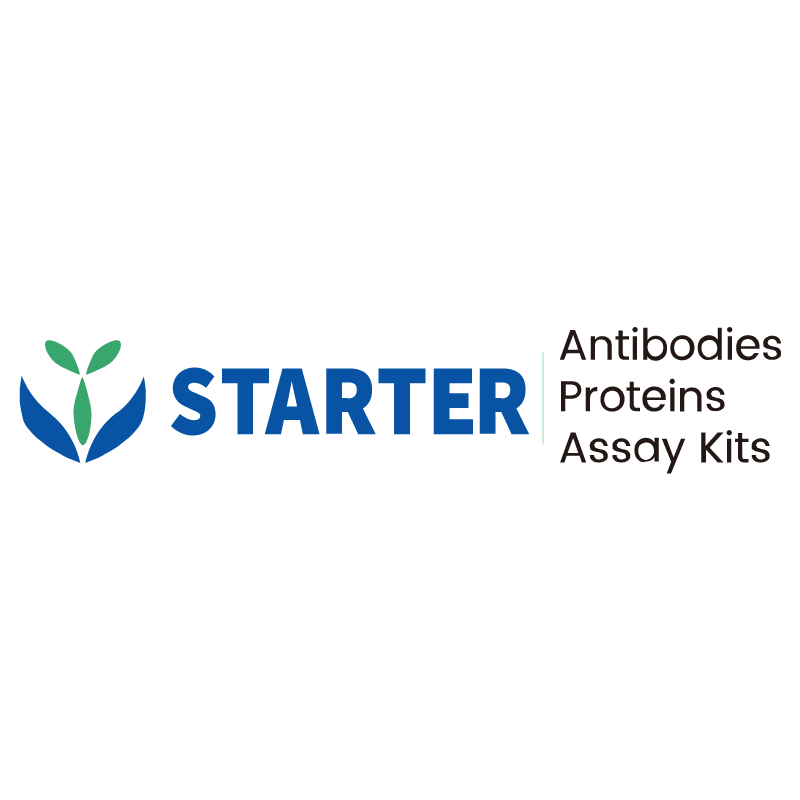WB result of UCP1 Recombinant Rabbit mAb
Primary antibody: UCP1 Recombinant Rabbit mAb at 1/1000 dilution
Lane 1: mouse adipose lysate 20 µg
Lane 2: mouse brown adipose lysate 20 µg
Negative control: MCF7 whole cell lysate
Secondary antibody: Goat Anti-rabbit IgG, (H+L), HRP conjugated at 1/10000 dilution
Predicted MW: 33 kDa
Observed MW: 32 kDa
Product Details
Product Details
Product Specification
| Host | Rabbit |
| Antigen | UCP1 |
| Synonyms | Mitochondrial brown fat uncoupling protein 1; UCP 1 Curated; Solute carrier family 25 member 7; Thermogenin; SLC25A7; UCP |
| Immunogen | Synthetic Peptide |
| Location | Mitochondrion |
| Accession | P25874 |
| Clone Number | SDT-2275-37 |
| Antibody Type | Recombinant mAb |
| Isotype | IgG |
| Application | WB, IHC-P, IF |
| Reactivity | Hu, Ms |
| Positive Sample | human brown adipose, mouse brown adipose |
| Predicted Reactivity | Sq, Hm |
| Purification | Protein A |
| Concentration | 0.5 mg/ml |
| Conjugation | Unconjugated |
| Physical Appearance | Liquid |
| Storage Buffer | PBS, 40% Glycerol, 0.05% BSA, 0.03% Proclin 300 |
| Stability & Storage | 12 months from date of receipt / reconstitution, -20 °C as supplied |
Dilution
| application | dilution | species |
| WB | 1:1000-1:2000 | Ms |
| IHC-P | 1:250 | Hu, Ms |
| IF | 1:500 | Ms |
Background
UCP1 (uncoupling protein 1), a 33 kDa integral membrane protein located in the inner mitochondrial membrane of brown adipose tissue, operates as a protonophore that dissipates the electrochemical gradient generated by the electron transport chain, thereby uncoupling oxidative phosphorylation from ATP synthesis and converting the released chemical energy into heat (non-shivering thermogenesis); it is activated by cold-induced sympathetic release of norepinephrine via β3-adrenergic receptors, which elevates cAMP and triggers lipolysis, liberating free fatty acids that both allosterically activate UCP1 and serve as respiratory substrates, while purine nucleotides (ATP/ADP) inhibit its activity competitively, and its transcription is synergistically regulated by PGC-1α, PPARγ, and the thyroid hormone T3, making UCP1 a critical determinant of systemic energy expenditure and a promising target for anti-obesity therapeutics.
Picture
Picture
Western Blot
Immunohistochemistry
IHC shows positive staining in paraffin-embedded mouse brown adipose. Anti-UCP1 antibody was used at 1/250 dilution, followed by a HRP Polymer for Mouse & Rabbit IgG (ready to use). Counterstained with hematoxylin. Heat mediated antigen retrieval with Tris/EDTA buffer pH9.0 was performed before commencing with IHC staining protocol.
IHC shows positive staining in paraffin-embedded mouse white adipose. Anti-UCP1 antibody was used at 1/250 dilution, followed by a HRP Polymer for Mouse & Rabbit IgG (ready to use). Counterstained with hematoxylin. Heat mediated antigen retrieval with Tris/EDTA buffer pH9.0 was performed before commencing with IHC staining protocol.
Immunofluorescence
IF shows positive staining in paraffin-embedded mouse brown adipose. Anti-UCP1 antibody was used at 1/500 dilution (Green) and incubated overnight at 4°C. Goat polyclonal Antibody to Rabbit IgG - H&L (Alexa Fluor® 488) was used as secondary antibody at 1/1000 dilution. Counterstained with DAPI (Blue). Heat mediated antigen retrieval with EDTA buffer pH9.0 was performed before commencing with IF staining protocol.
Negative control: IF shows negative staining in paraffin-embedded mouse white adipose. Anti-UCP1 antibody was used at 1/500 dilution and incubated overnight at 4°C. Goat polyclonal Antibody to Rabbit IgG - H&L (Alexa Fluor® 488) was used as secondary antibody at 1/1000 dilution. Counterstained with DAPI (Blue). Heat mediated antigen retrieval with EDTA buffer pH9.0 was performed before commencing with IF staining protocol.


